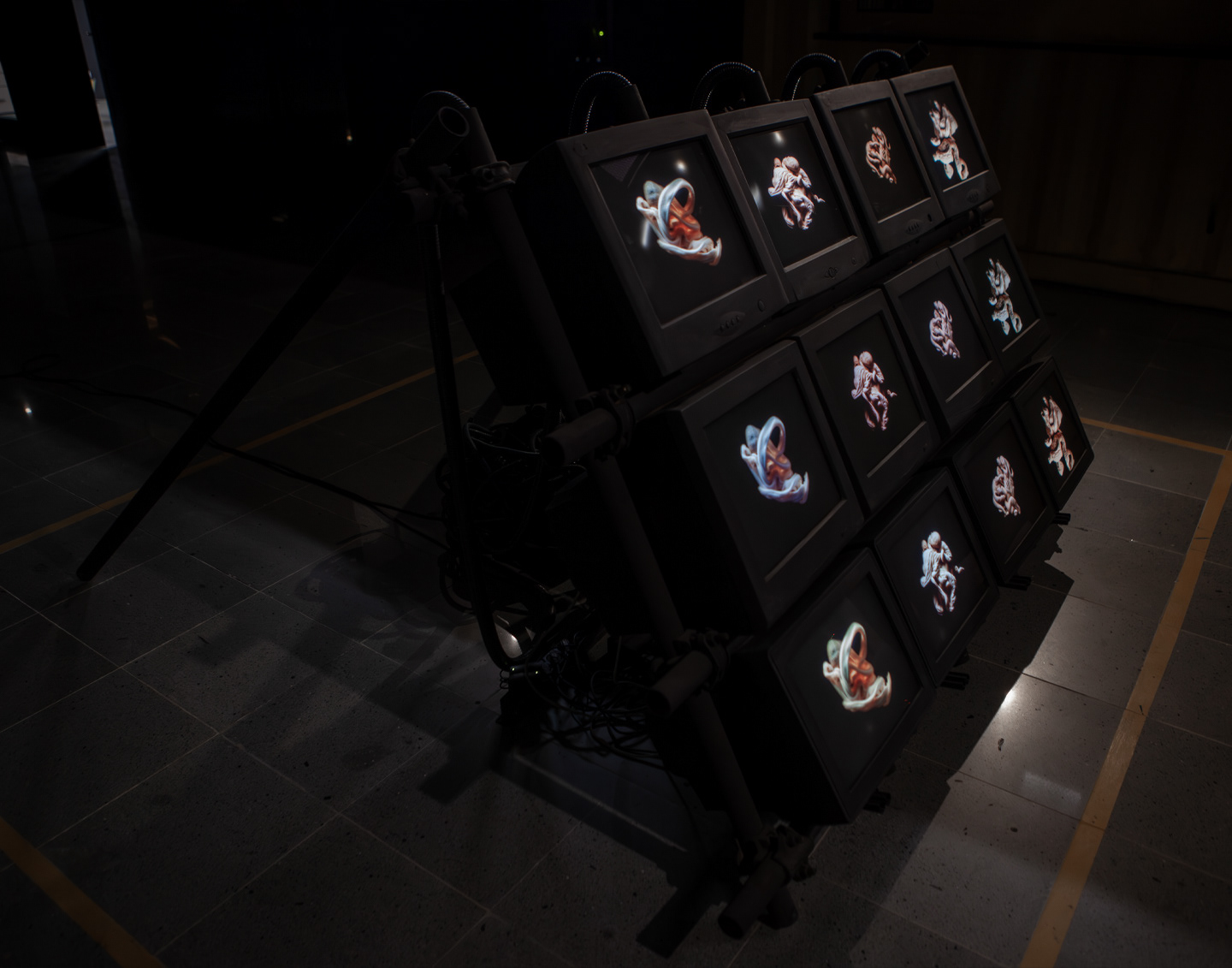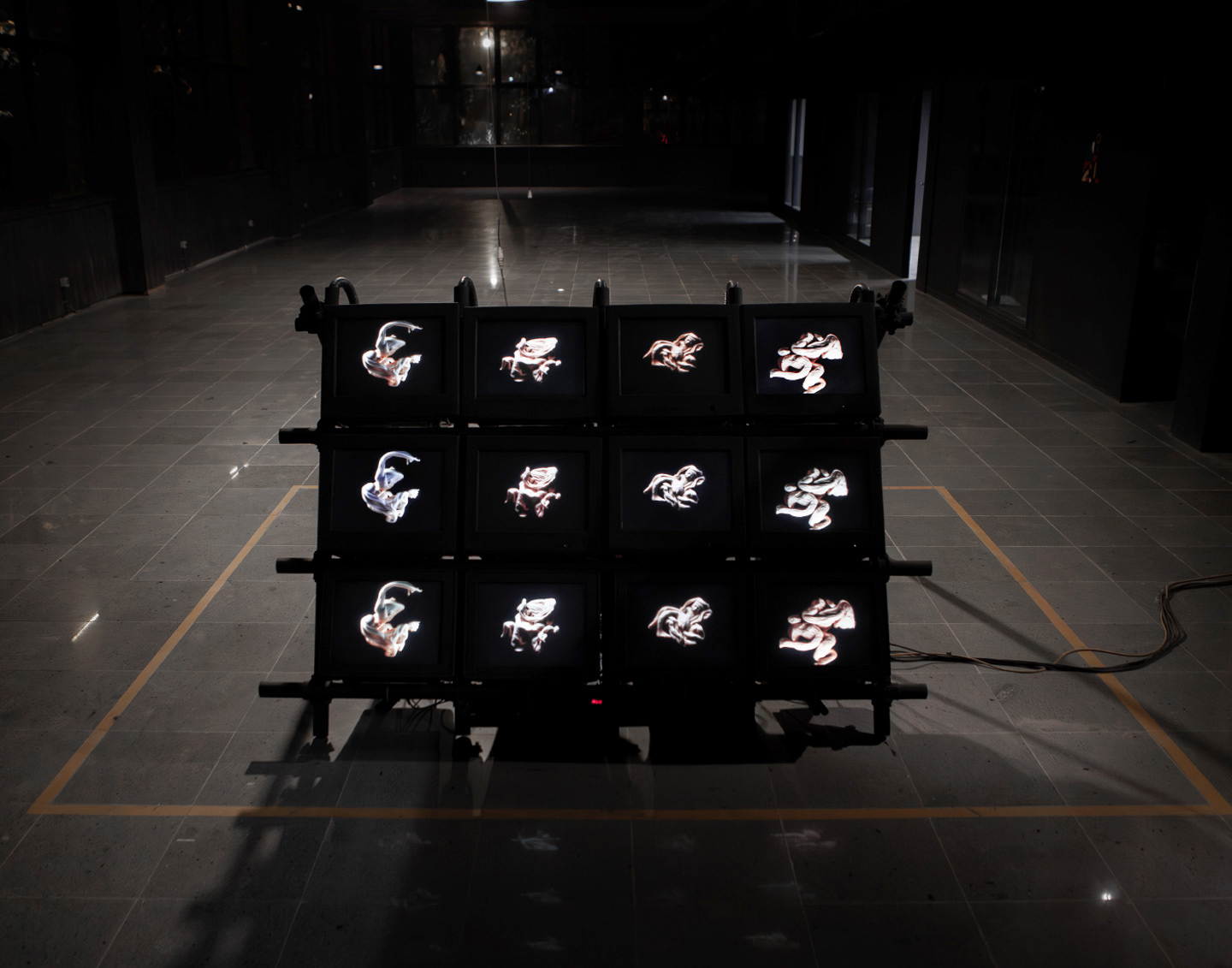INCARNATION

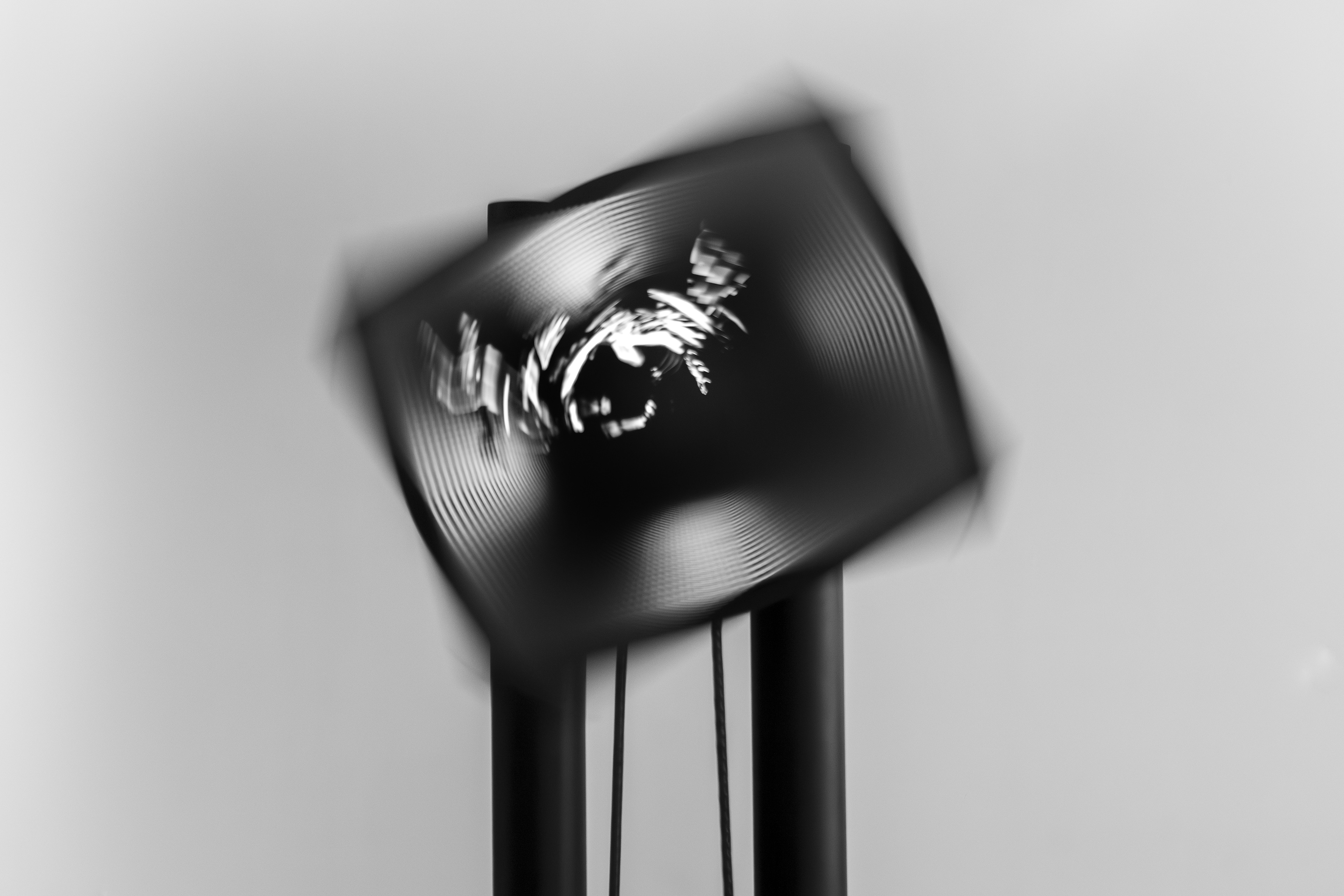
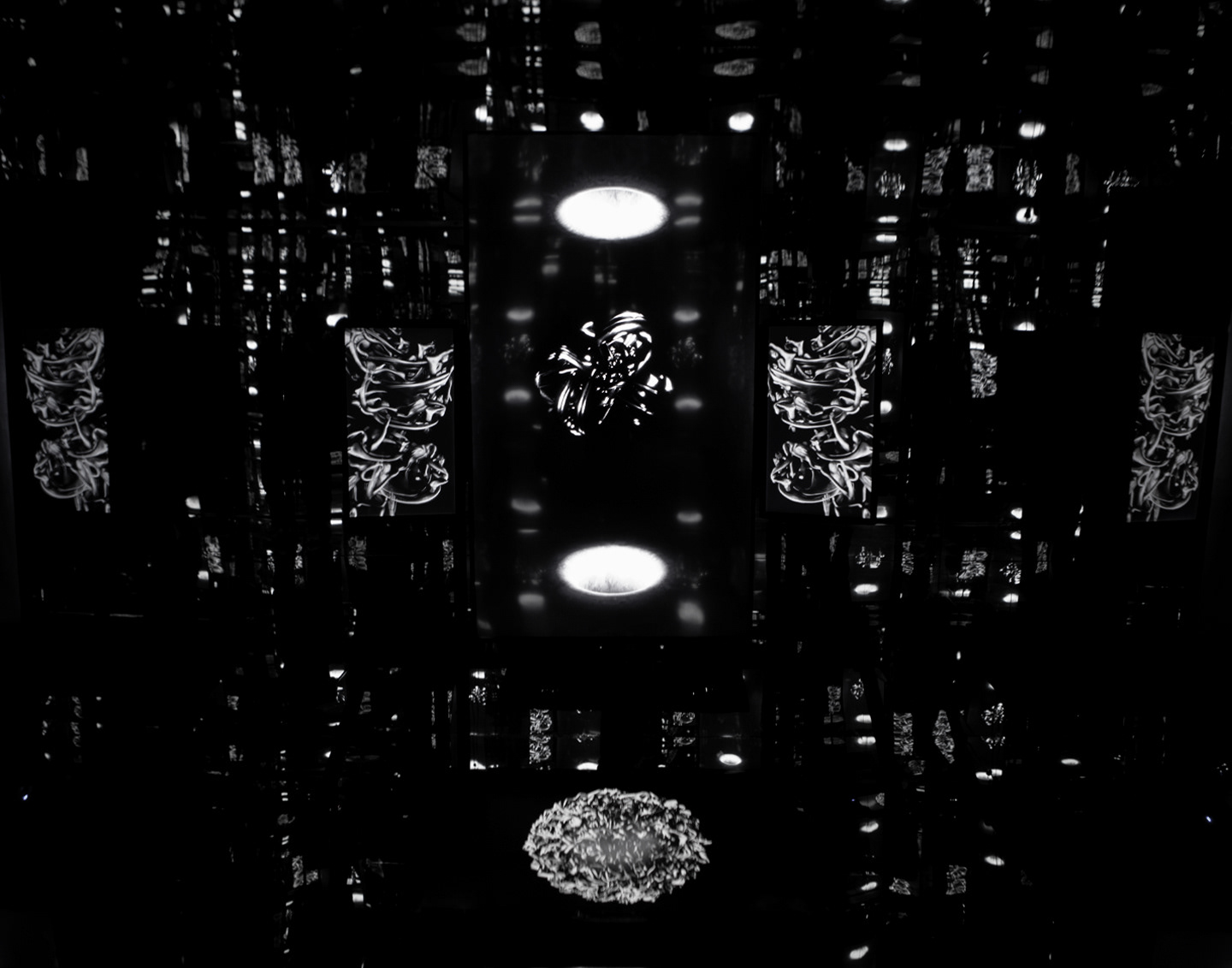
Incarnation refers to the moment when the intangible realm of thought assumes a material presence—where imagination intertwines with matter. In this context, the image transcends mere representation of the external world; it becomes a dynamic event, continuously constituted through the interaction of body, media, and machine. The body ceases to function solely as an object to be perceived; it transforms into an active medium, a system of perception, action, and responsiveness. Likewise, digital media extends beyond the surface of the screen to operate as a corporeal field wherein the image is incarnated, thereby reshaping the body in novel ways. Within this recursive process, the boundaries between action and reaction, agency and command, remain in a state of fluid negotiation. Human and technological entities co-exist within a hybrid ontology—simultaneously exerting control and being subject to it. What emerges from this condition is not a reproduction of reality, but rather the potential to reconfigure consciousness through a renewed relationship with materiality, imagery, and subjectivity.
-Blindness
The desperate search for a lost meaning leaves us with choices that are not our own, trapping us in a cycle of desire, confusion, and denial, a spin we endure just to face the day.
Whether lost or standing still, we surrender to the structures built around us. Within these confines, the very paths we follow are set in motion and held in orbit by a hand that is not our own.
The desperate search for a lost meaning leaves us with choices that are not our own, trapping us in a cycle of desire, confusion, and denial, a spin we endure just to face the day.
Whether lost or standing still, we surrender to the structures built around us. Within these confines, the very paths we follow are set in motion and held in orbit by a hand that is not our own.
Blindness — Technical Details
The display rotates freely in both directions, allowing continuous 360° movement.
A rotary encoder captures this motion and transmits rotation data to Unity 3D, where a physics simulation is applied to a digital human model under the influence of gravity.
As the model interacts with the simulated surface, the points of contact generate synchronized sound effects and low-frequency vibrations, transmitted to the floor beneath the viewer’s feet.
This feedback loop creates a tactile and auditory extension of vision—an embodied encounter with instability and perception.
A rotary encoder captures this motion and transmits rotation data to Unity 3D, where a physics simulation is applied to a digital human model under the influence of gravity.
As the model interacts with the simulated surface, the points of contact generate synchronized sound effects and low-frequency vibrations, transmitted to the floor beneath the viewer’s feet.
This feedback loop creates a tactile and auditory extension of vision—an embodied encounter with instability and perception.
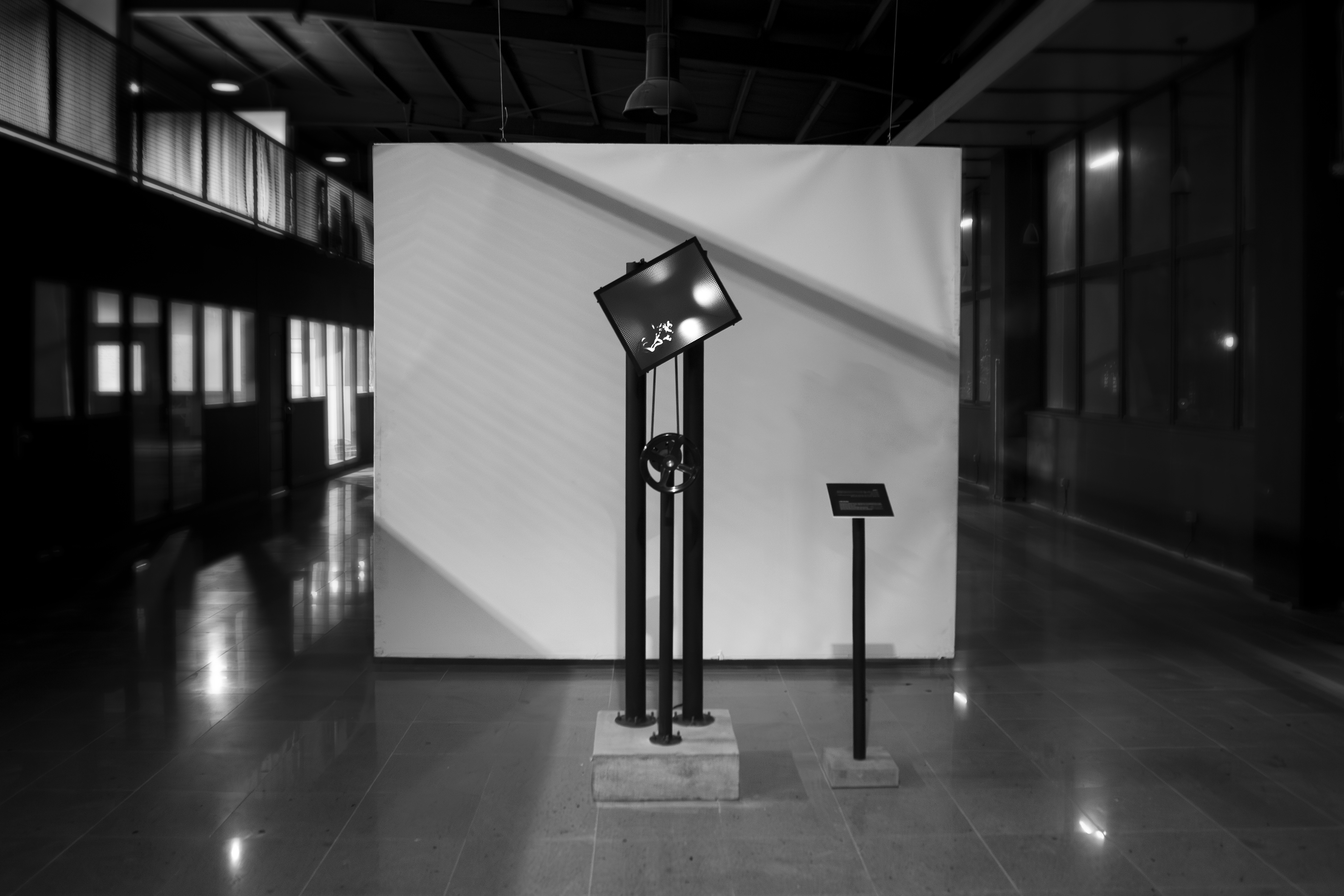
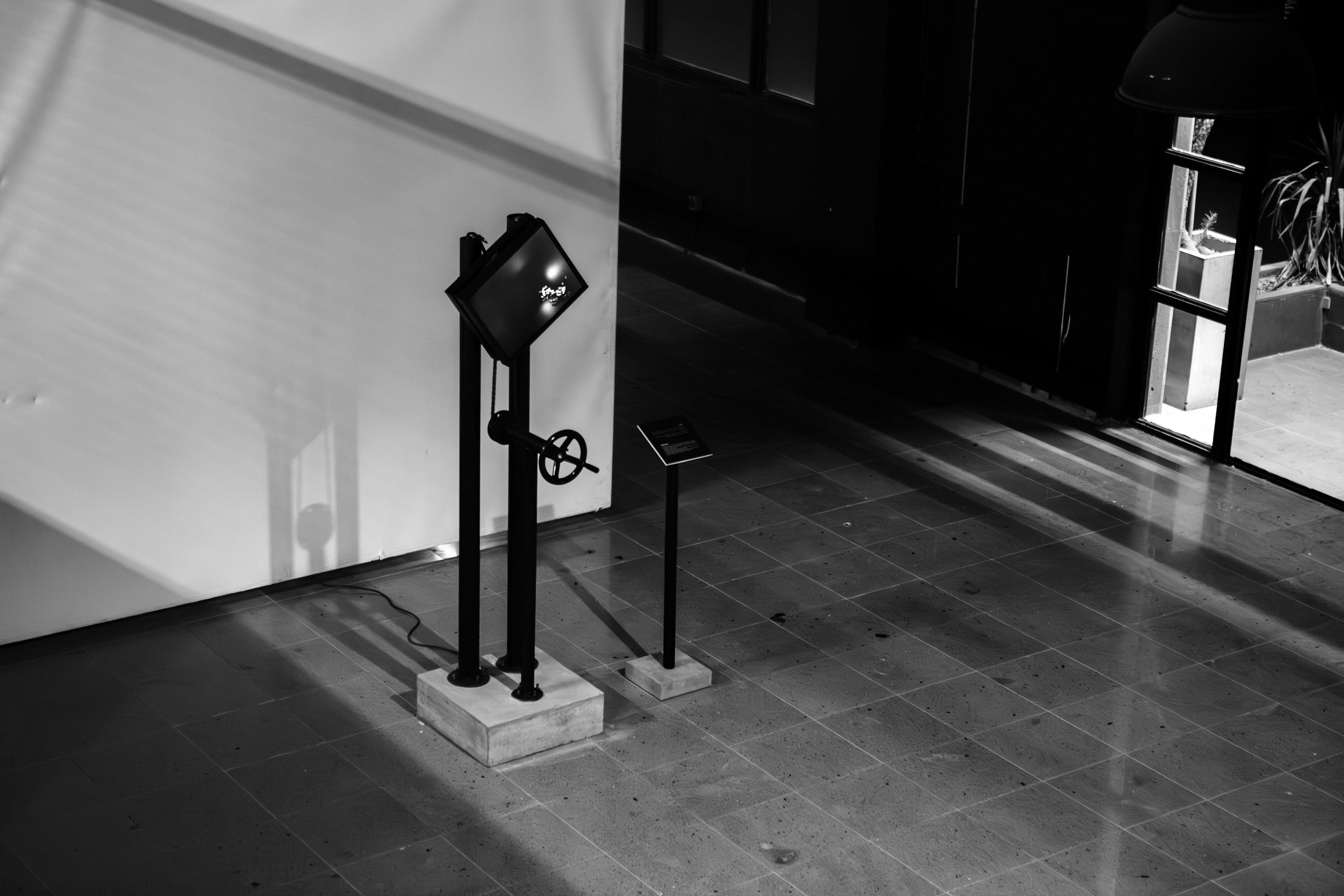
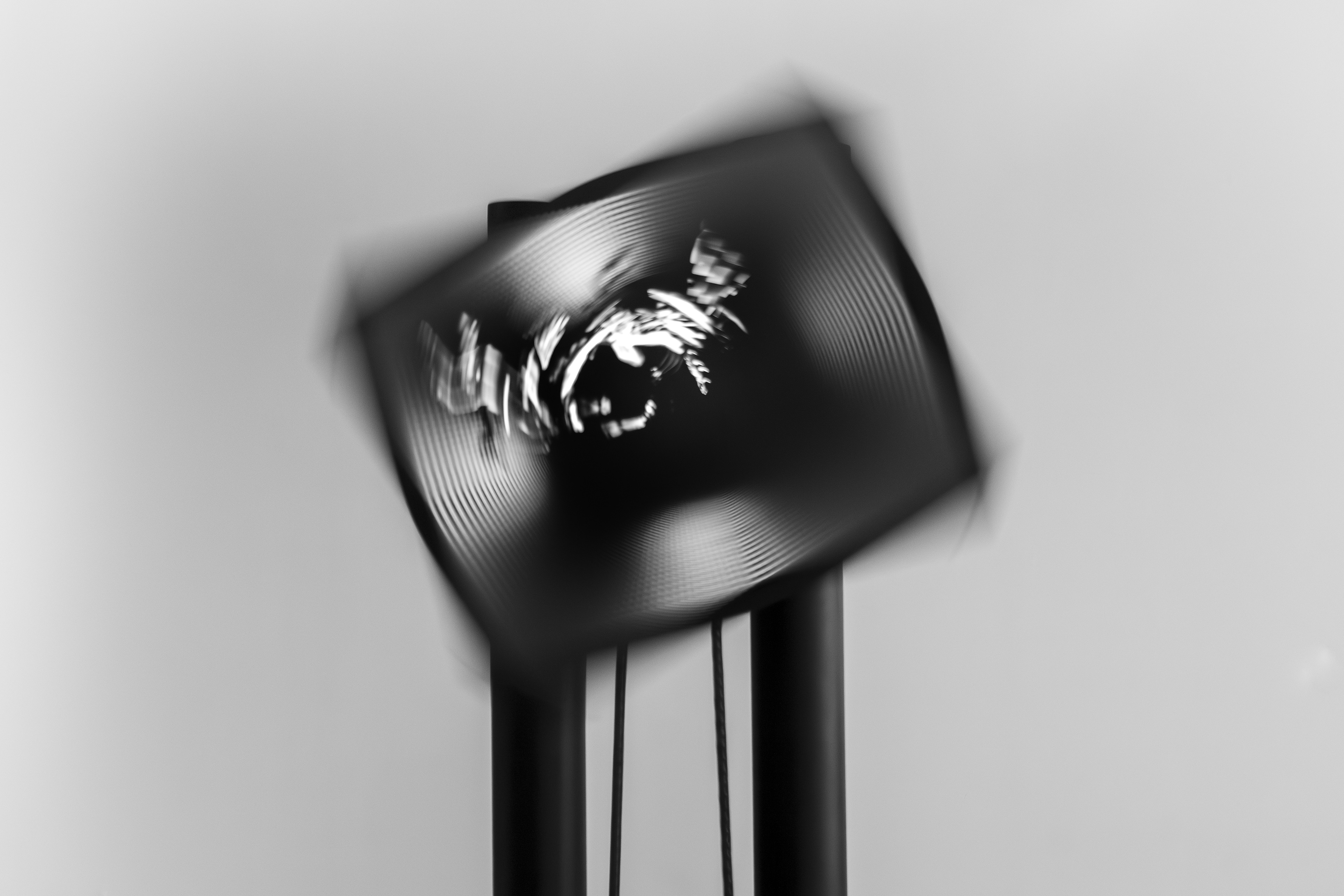

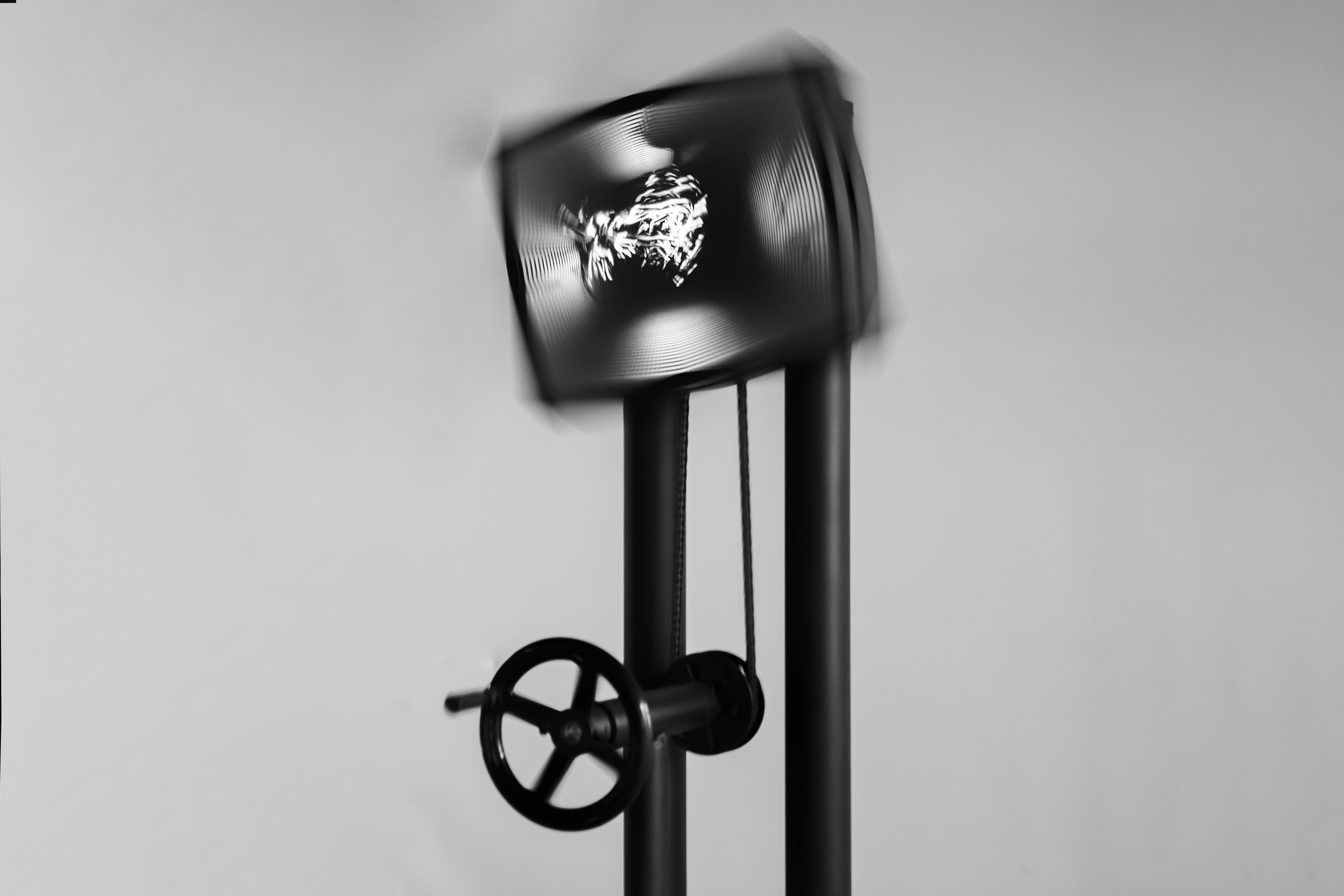
-Anatomy of Pain
Anatomy of Pain is an incarnation of suffering, where fragmented digital bodies move through mirrored space, guided by the viewer’s motion.
Each gesture transforms pain into light and reflection, turning perception into a tactile act.
Here, technology becomes flesh, and interaction becomes the pulse of empathy.
Each gesture transforms pain into light and reflection, turning perception into a tactile act.
Here, technology becomes flesh, and interaction becomes the pulse of empathy.
Anatomy of Pain - Technical Details
The installation is housed inside an old industrial container, with all interior surfaces covered in mirrors, creating an infinite reflection field.
At its center, a main screen displays real-time 3D simulations of human figures rendered in Unity.
The audience interacts through a Kinect sensor using only their right hand, guiding the figures’ movement within the mirrored virtual space.
At its center, a main screen displays real-time 3D simulations of human figures rendered in Unity.
The audience interacts through a Kinect sensor using only their right hand, guiding the figures’ movement within the mirrored virtual space.
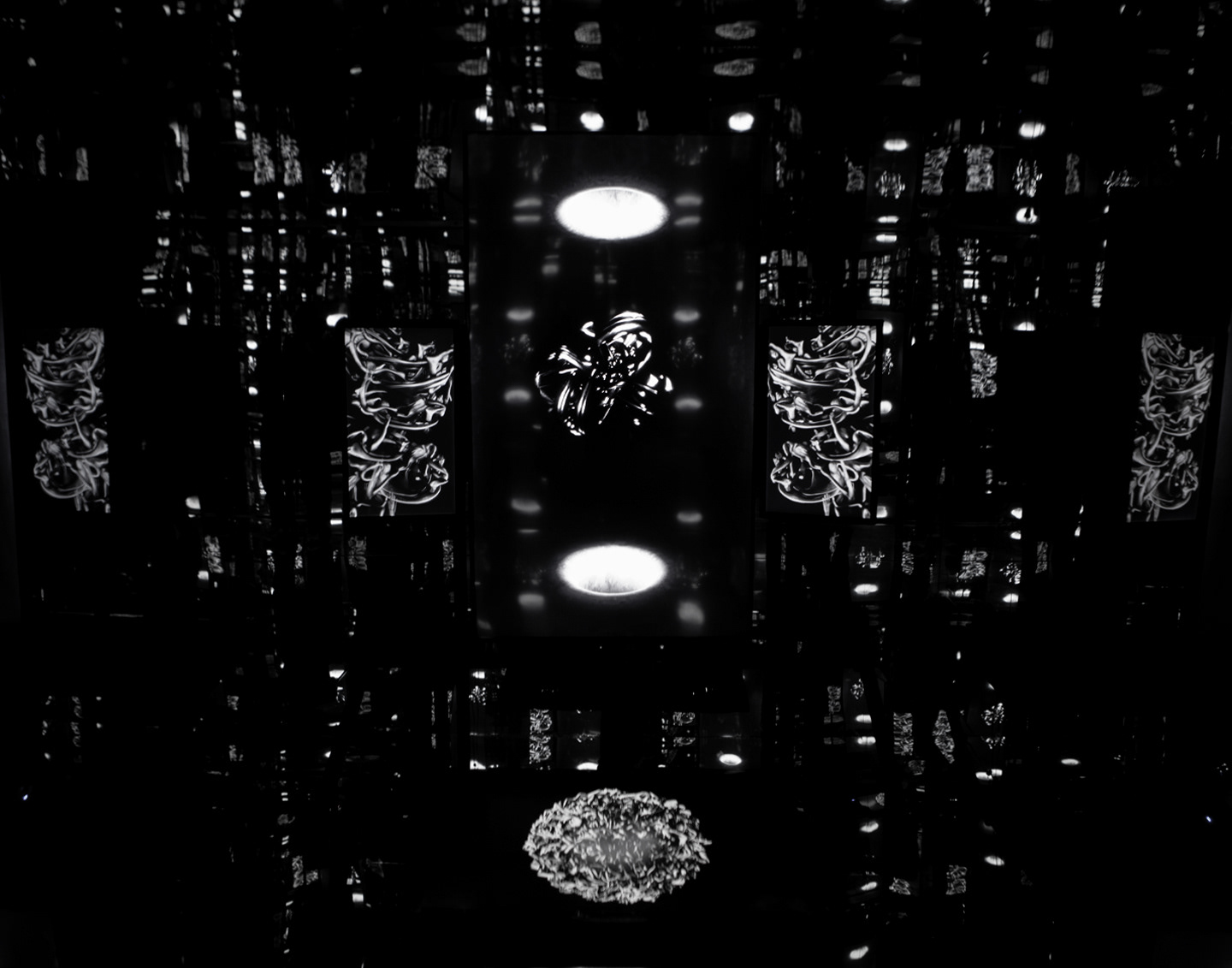
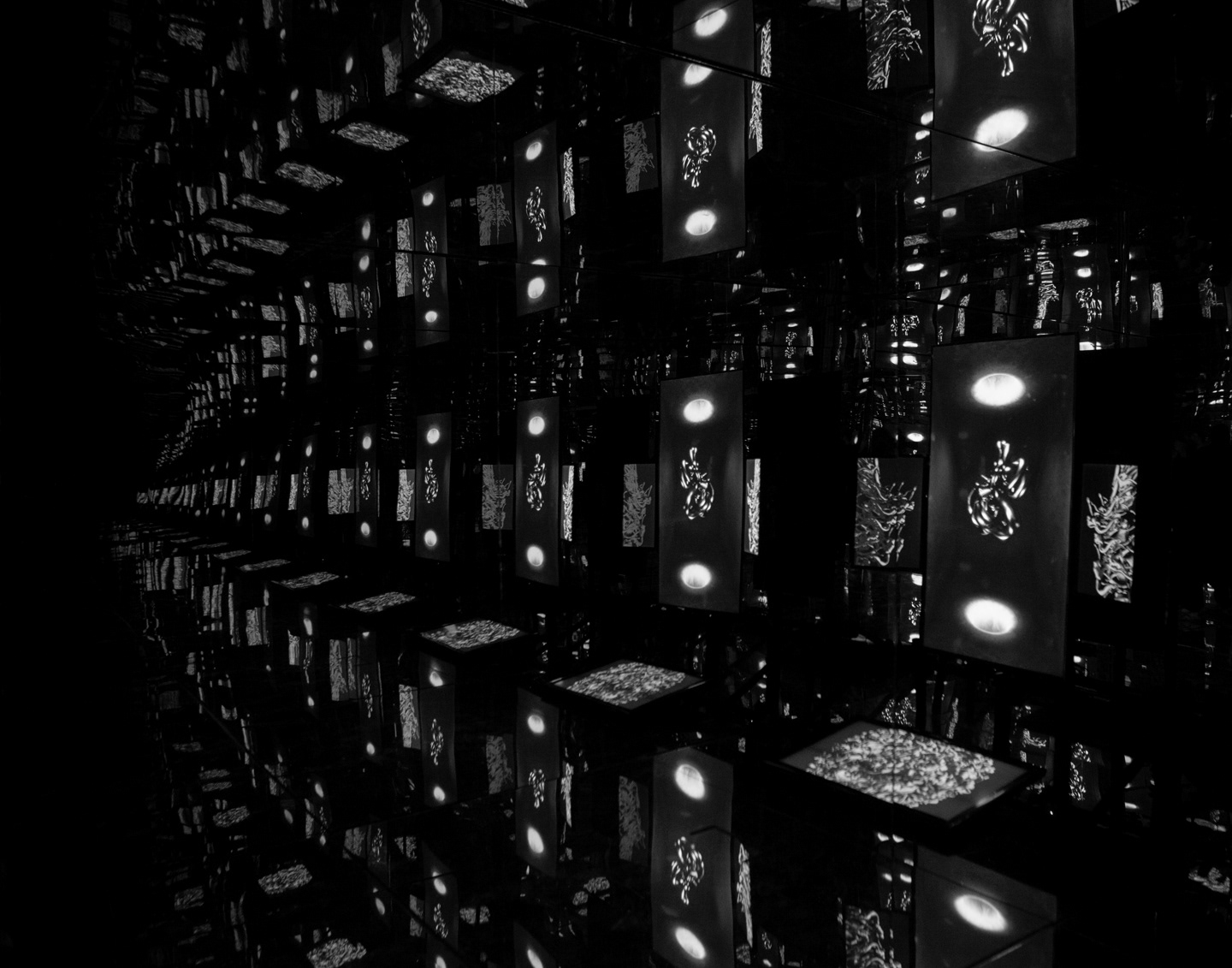

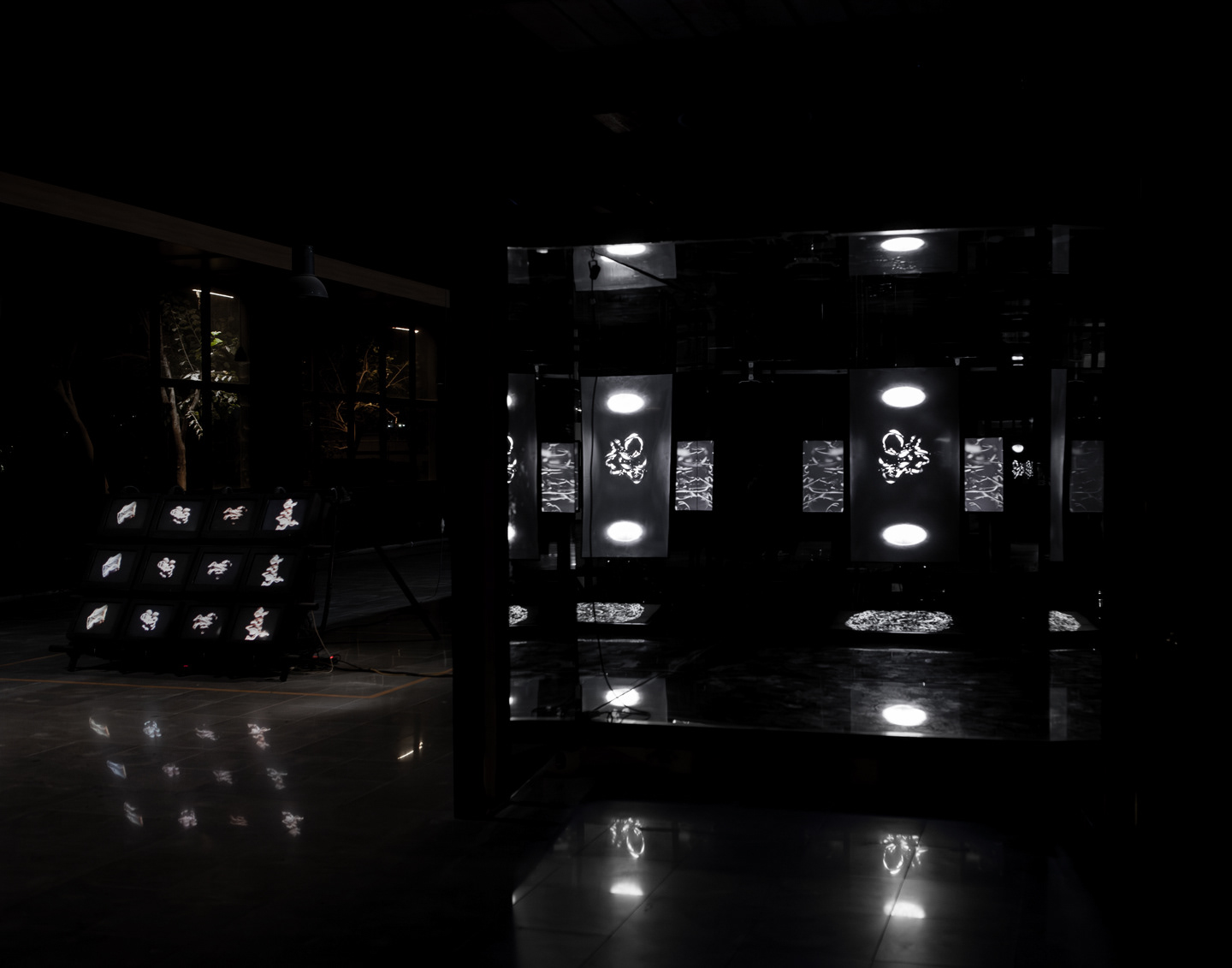
- Ontogeny
Ontogeny is a visual exploration within the broader ISTHMUS project, integrating photography, 3D simulation, and artificial intelligence.
This body of work engages with the formative imagery of the human embryo, utilizing 3d simulation and custom AI model trained with high-resolution photographs captured at the Pathology Museum of Tehran Medical University. The model, developed through Stable Diffusion, reconstructs and reinterprets embryonic development as a generative aesthetic process.
This 12-screen installation reacts to your presence. Using TouchDesigner, ultrasonic sensors, and GLSL shaders, the visual and audio noise intensifies the nearer you get.
This body of work engages with the formative imagery of the human embryo, utilizing 3d simulation and custom AI model trained with high-resolution photographs captured at the Pathology Museum of Tehran Medical University. The model, developed through Stable Diffusion, reconstructs and reinterprets embryonic development as a generative aesthetic process.
This 12-screen installation reacts to your presence. Using TouchDesigner, ultrasonic sensors, and GLSL shaders, the visual and audio noise intensifies the nearer you get.
